

Featured Article of the Month
Lighting Up Singapore - Interview With Reiko Kasai and WOHA
|
In continuation to JCC's interview with Reiko Kasai, a Managing Director at Lighting Planners Associates (LPA) in last month's E-Magazine issue, JCC also sat in a talk session that Reiko Kasai had with Wong Mun Summ and Richard Hassell, two founding members of WOHA.
Japan Creative Centre (JCC): How did you get to know Kasai-san? |
|
Richard (RH): We met Reiko in 1998 for a magazine interview. At that point, it was more of a journalist relationship we had with Reiko but then soon after that LPA set up in Singapore, we got to know her professionally.
Mun Summ (MS): I think what I really like is the meticulous nature of Reiko which I think is very Japanese. She is very thorough, and also at the same time, sort of very warm and relates very well which we cherish in a relationship. |
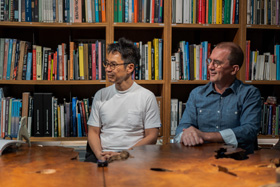 Wong Mun Summ (left) and Richard Hassell (right) |
|
RH: We got to know each other very well through the interview process, which is slightly different from when you meet as a consultant so we got to learn each other well. She got to find out a lot more about us first.
MS: She knows more about us than we know about her, but over the years we got to know even more about her. RH: I think things I like about Reiko is that she is very steady and calm. Quite often our projects are very stressful and the clients can sometimes behave in quite a frustrating way so it’s nice to be with someone who doesn’t set them off-balance and just deals with it in a very calm and methodical way. That’s really a fantastic quality on a project to have someone like that. She is good fun and in social situations she has great humour and we get along very well. JCC: You mentioned you were interviewed and learned about LPA but what was the deciding factor that led you to work together with LPA and Kasai-san? MS: If I’m not wrong, because of the rail line competition (WOHA won the Marina Line Architectural Design Competition, and their designs were chosen for Bras Basah and Stadium MRT Stations), we were looking into kinetic art in the stations. We thought that this is a lighting designer company we are very keen to work with, we approached LPA to do the work. RH: I think we really liked the Japanese aspect and their designs were cutting with shadows that although weren’t brightly-lit, was selective and moody, and that was quite different from the lighting designers we knew before and worked before. MS: I think for us, we like the subtlety in the LPA’s work. I think that comes from a very abstract quality in design that is the essence of Japanese design. That is one of the thing we really liked about their company’s philosophy. |
|
Reiko (RK): In “Praise of Shadows”, a famous book written by Junichi Tanizaki, the writer praises not only darkness, but also shadows. That’s Mr. Mende’s (Kaoru Mende), LPA’s bible. I think they saw our previous projects that we have done in Japan that captured this essence. We don’t think that we have necessarily Japanese essence in our work but it’s our interpretation of incorporating lighting into the architecture and space. I think the interpretation or the approach is different from maybe Western designers.
MS: As a student I collected GA books (GA is a Japanese architectural publication company). GA books are mostly in black and white, and I think it’s the quality of the light that comes across very well and was something I personally liked. |
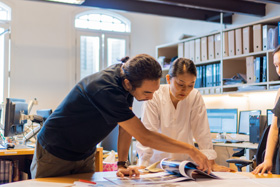 |
|
RH: It might not be traditional Japanese lighting design but for me, if you walk to the city and you see a lantern in the walkway, it creates that “glow”. It’s dark but welcoming, and it seems like all Japanese naturally have an affinity for this kind of lighting. To us, it looks Japanese but maybe for the Japanese everyone shares that experience.
RK: It is something natural. JCC: To Kasai-san, what is the reason you interviewed them and continued to work with WOHA? What makes them stand out against others? RK: As I said earlier, through my work with LPA as a lighting consultant, we work with various architects. When we first came to Singapore, obviously my first interest was to get to know the architects, what sort of architecture is out there, and who is around as we were entering an unknown society. Before coming to Singapore I knew some of the older generation, but when I arrived, slightly before 2000, the new blood of the architect world was beginning to be recognised. That’s when I learned about WOHA and I was very much interested in meeting with them. Throughout these 20 years, it has been very inspirational knowing them and how they evolved. They are always forward-thinking and I do appreciate architects who really always push the boundary, and who always have strong idea and thinking behind their works. Of course, you can pursue creating beautiful architecture but I like them; their way of pushing architecture that is rooted with the idea of the environment, the climate, the urban situation... I like all the theory and their way of thinking. It is easy to talk about it but they try to reflect their ideas in the architecture. It is also interesting as a writer, or as a journalist observing architecture and design as a culture because that’s what I am always interested in. I have been writing to Japanese publications, not only to practice and represent the lighting company, but also to understand how the design and architecture culture has evolved. It has been such a great journey for me, as when I first met them they had just took off after winning the competition. I was right to say that I think that they will really break through and go down in architectural history! After that, LPA has had the opportunity to work together with them in SOTA (School of the Arts), Oasia, and PARKROYAL on Pickering and also some hotel resorts in Bali. |
|
I always appreciate their ideas and of course, as a lighting consultant, our role is to complement their work as lighting itself doesn’t do anything, lighting is to compliment space in architecture. It has been a great inspiration (working with them) and WOHA has talent that Singapore can be proud of. It also has been a pleasure to observe closely how they work and be able to introduce them to Japanese readers because there are not many writings about the future of Singaporean architectural designers in Japan.
JCC: This question is for everyone. What was your vision for Japanese and Singapore architecture when you first started working together, and also for the future? |
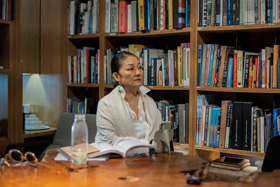 |
|
RH: I think when we started working together, Singapore architecture was seen as at a much lower state of development than Japanese architecture. All of Asia and Australia really was so amazed by Japanese architecture and design. It was seen as a class ahead. I think as the time has gone on, there’s been a lot more interest in diversity and different places and local cultures. Before, in the 1980s, in Singapore we wished we could be like Japan. Now we are okay saying that we have our own direction and set of criteria.
But I think that there are some differences. I find Japanese are really great at things that are human-scaled, things that you can touch and feel. The sort of natural tendency in Japan is to create an area and then make something very beautiful in it. Singapore’s almost the opposite. Singapore is very good at the big stuff, like infrastructure and whole city planning. As a culture generally, I think it is quite rough at the close-up level and not so appreciative maybe of refinement and maintaining things beautifully. I think that part is done so nicely in Japan. MS: The abstraction of Japanese culture is actually very interesting for us, because it also helps us to distil our ideas into just the essence. There’s where I think the relationship between us and LPA is quite interesting, because we do learn from Reiko and LPA. I think Japan is very strong in crafting, to do work things on a smaller, fine scale, and to be able to make things into perfection and artistry. We like to craft things, and what’s unusual about our practice is that we are able to do very small things. We design furniture and objects, and large master plans. We are very adept at doing two scales, which is something we find interesting working with Japanese designers (as they can do that too). We also relook at Japanese design as inspiration to craft nice things, to do good joinery and things like that. We would always think about our visits to Japan, and take a lot of references from that. We went to Kyoto and saw many beautiful, ancient structures. Even bridges, even though it is a simple bridge, would translate into a design that we have in our work. We find it inspirational that Japanese architecture and design has so much more to learn from. RK: I remember one time you (MS) stayed at the Hyatt Regency in Kyoto. You also liked the design of Super Potato. That was reflected into your design of Crowne Plaza at Changi Airport. |
|
RH: And I think from your side, Reiko, Singapore has probably forced you to, in some ways, release a bit of control, in terms of what you expect to have in Japan and to be comfortable with things being a little bit, um...
MS: Less imperfect? (Laugh) RH: Yeah, less imperfect. |
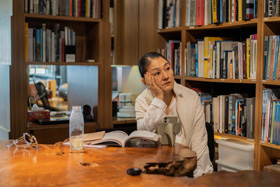 |
|
RK: It was interesting also because I just had a roundtable discussion with Mr. Mende and two other directors in Tokyo, talking about also wrapping up LPA’s 30th year anniversary for a publication. In the end, I think the philosophy, or what is important is this: the details and the concept. No matter what we practise, that’s something that is in the LPA’s DNA. In Japan, that can be done. People look into details they appreciate and respect, and try to respond.
Here, you have to be a bit more open-minded about this. But we can find a solution to adapt to that. I don’t believe in figuring out which is better; I think we all have different working environments and we need to find a solution. I was just thinking that throughout these 20 years, there has been a kind of hybridisation. I think that sort of approach to design, like your whole part is a part of your design process, is something that the Japanese have in their genes. But it’s something that we can combine, mix, and hybridise together. I think now it’s a good time to explore new design expressions. RH: I think in some ways, the Singapore approach is appropriate for the sort of time we live in as well. Generally, things change so quickly you have to change direction halfway through, or find a solution. That sort of robust approach, and the flexibility to accept different outcomes is actually quite a useful skill. |
|
JCC: What changes did you both see in Singapore architecture over the past 20-30 years? Specifically, do you see any Japanese influences, and vice versa? And how Japan has contributed and can continue to contribute to Singapore’s architecture, and vice versa?
RH: I think Singapore has quite a love affair with Japan at the general population level now. So many people I know go to Japan at least once a year for holidays. Designers in particular are probably the most enthusiastic visitors. I think there has been a huge impact on the design culture in Singapore from Japan. All of us love going there and experiencing things, buying things and bringing them back, visiting museums... Without sort of being specifically influenced by Japan, just by having that love of the many beautiful things that you can experience, Japan does have a big impact, I think. Like Mun Summ mentioned, we like the little bridge from the Philosopher’s Walk in Kyoto. We really like the railing on the side of it. I think we’ve used that a few times. But the proportions of Japanese architecture is really interesting in terms of the roof and veranda space. The height of the railings is very unusual when you compare them to the standards that we have here. That’s very interesting to try, like how can we get those beautiful proportions when we still have to comply with regulations about safety and things like that. Maybe in some ways, it has a lot in common with Chinese culture. But if you look at a Chinese temple in Singapore versus a Japanese temple, there are shifts in the materials and things like, what makes it Japanese versus Chinese. It’s very interesting. There’s definitely a sense of beauty and refinement and balance. There is also a sense of emptiness I think, when everything’s not full. The quietness is really inspirational. |
| MS: When you talk about design, Japanese design is very distinct. If you ask anyone which are the cultures and designs that are distinct, Japanese is always one of the first ones that come out. I think this is where then there is so much discussion about what is Singapore design. It’s something that Singapore has always been reflecting on quite a lot. One of the key things I think is Singapore design is tropicality. I think the other word to use is robustness. I think it’s the culture of Singapore, being a city state, being in a very vulnerable position, to constantly reinvent itself and being very robust to survive. I think the combination of the location, the tropicality and the robustness gives maybe the identity of Singapore design and architecture at the moment. | 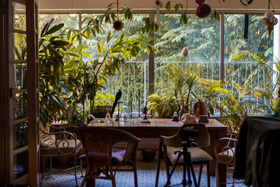 |
|
Our philosophy is that we think design does need to be quite robust and very resilient. We are also very concerned about sustainability and also the regeneration of the planet. This is where Singapore is relevant because of our insecurity as a city state. Also, now with climate change and the loss of biodiversity, the planet is actually in trouble. This is where our architecture and design is relevant and important, because we want to find ways to see how we can help to improve the built environment and at the same time, work towards regenerating the planet.
RH: Also, Singapore’s a migrant country. We have a kind of freedom in that we don’t have a rich tradition, but in a way, it may also make people feel a little bit disconnected. But I think it does give Singapore this ability to borrow from many cultures and put them together. We can change from one decade to the next very quickly because we’re not weighed down with so much heritage that we have to deal with or interpret. MS: Whereas I think Japan is quite different. Japan has a very strong history and culture. To a certain extent, I think Japanese designers tend to be weighted by that fact itself. They have to do things the Japanese way and to find ways to differ from it is not as easy. The other thing that I think is interesting, and which serves as some of the inspiration for Kampung Admiralty, is that Japan too has a similar problem. We both have a large ageing population. If you go to Tokyo right now, you see all these elderly people in the city itself and they are very active. I think that was a very strong inspiration. We wanted the elderly to be part and parcel of everyone’s everyday life. RK: Yes, the Kampung Admiralty project is a good hybridisation of what Japan and Singapore can offer. I think also, subconsciously, the architects or designers always get inspiration from visiting different places, right? So, whether you also consciously feel it or not, WOHA and other architects see a lot of elements in their work that is inspired or influenced by the Japanese designers they like. We are always observing, travelling, seeing, and experiencing to get inspiration. |
|
But also, what Mun Summ mentioned, design and sustainability is also what Singapore has been pushing for all these years, such as architecture that is sustainable and creating something that can contribute to, and create a sustainable community. I actually found it very interesting that Mun Summ mentioned Kampung Admiralty and how he also got some sort of idea and inspiration through the Japanese elderly community.
I think it’s a new way of architecture, and in terms of sustainable design Singapore is more advanced than Japan. Of course, there are some architects that are always hoping and pushing that idea. In general, Singapore’s agenda is to be a garden city. There is all this biophilic design and of course, WOHA is the frontrunners in this area. |
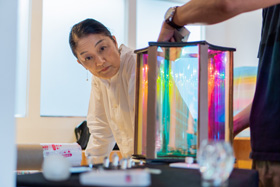 |
|
JCC: What is your favourite architecture design in Singapore? Whether done by WOHA or not.
RH: This is a terrible question for an architect, I think. It’s like asking a chef like, what is your favourite dish or something. MS: I’ve got quite a lot of favourites. I like People’s Park, Woh Hup Complex (currently known as Golden Mile Complex), Kranji War Memorial, and the Colony. I like these four buildings. RH: Yeah that is true. Can I just say the same? MS: No, you can’t. You have to find new ones. (laugh) RH: Definitely the Colony. That is one of my influences. I actually enjoy Bras Basah Complex as an outdoor shopping centre. I think it’s a really good model that we could do more of. I love shophouses like our own shophouse that we use as our office. MS: Reiko? RK: Yeah, I did tell you that I cannot answer this question also. But I like Enabling Village, how you managed to create such a breezy and robust space within the complex. I used to like Pearl Bank Apartments but the building is gone. Watch the interview here. * All photos used in this article are taken by JCC / © JCC |
|
Japan Creative Centre 4 Nassim Road, Singapore 258372 +65 6737 0434 / jcc@sn.mofa.go.jp https://www.sg.emb-japan.go.jp/JCC/ Nearest parking at Orchard Hotel & Delphi Orchard |
 |